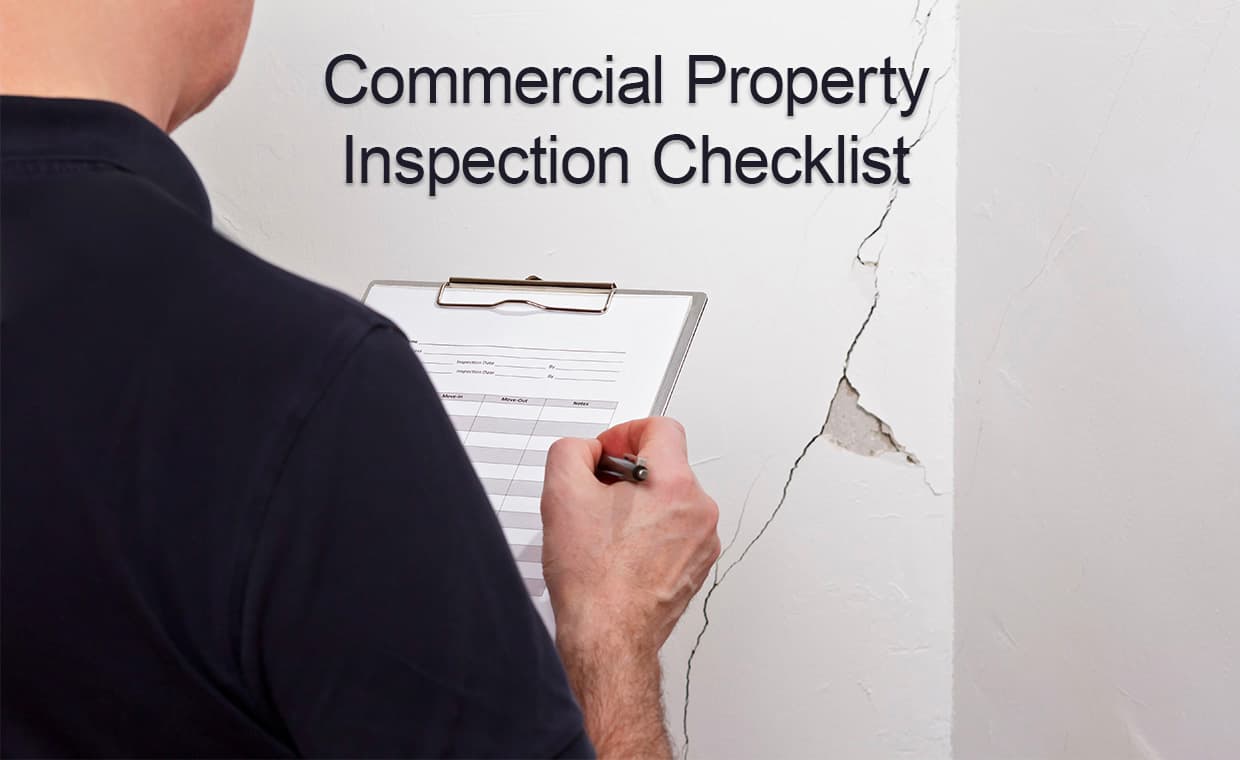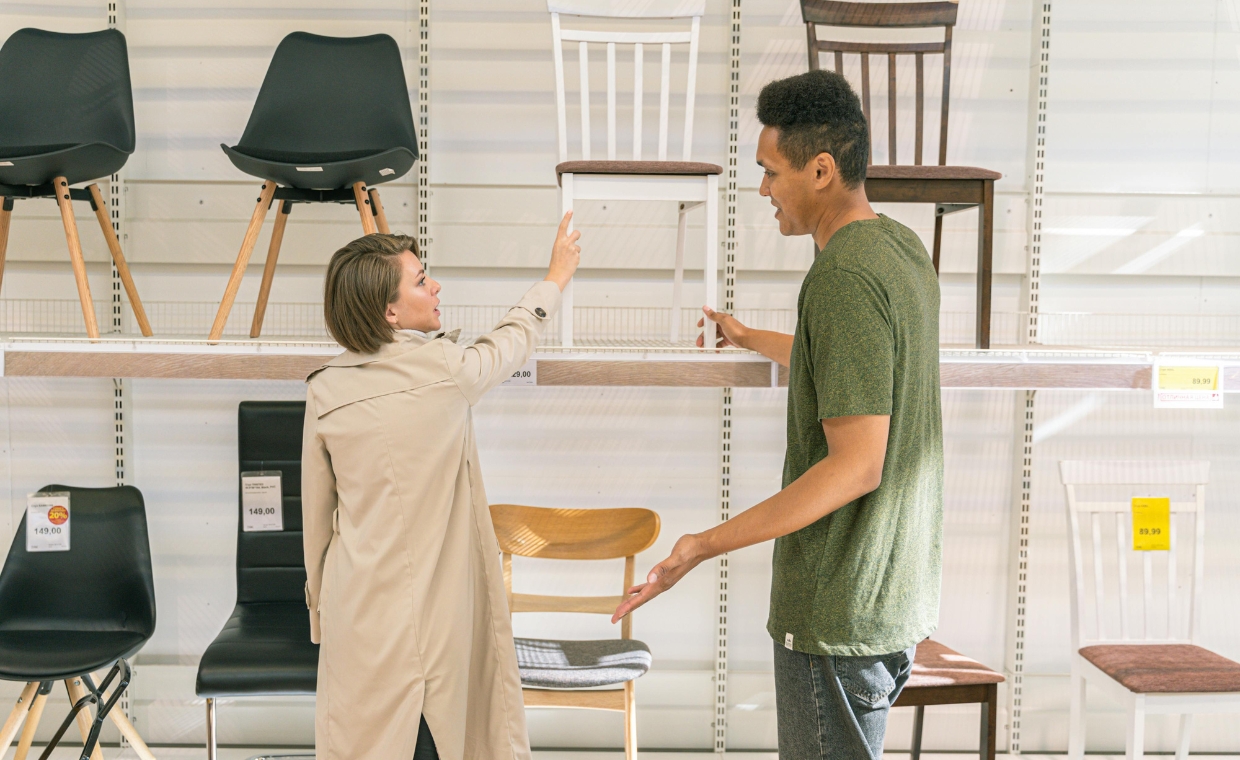
Uh oh, leaky roof? Cracked foundation? Being a commercial property owner is awesome, but ignoring maintenance can turn your dream into a disaster.
Whether you’re a seasoned pro or a first-time owner, regular inspections are crucial for maintaining your property’s value and ensuring a safe and functional environment for tenants. But with so much to keep track of, where do you even begin?
Commercial Property Inspections Checklist
This comprehensive guide provides an essential commercial property inspections checklist. This will empower you to conduct thorough evaluations and identify potential issues before they snowball into costly problems.
01. Gather Your Resources

Assemble your A-Team! You’ll need a qualified inspector for the deep dive. A commercial contractor can sniff out potential problems before they become wallet-whiners.
On the other hand, an insurance agent might join the party to make sure you’re covered. Don’t forget to collect your property intel, too. This includes building plans, maintenance records, and those sweet warranties.
Having everything on hand saves time and makes you look super prepared. Think of Batman with a utility belt, but for buildings!
02. Site Inspection: Check Your Building’s Exterior

Grab your inspector’s hat and be your building’s detective! Walk around the perimeter and check the foundation for cracks – tiny hairline ones are okay, but bigger splits need attention.
Is the siding looking worse for wear? Faded paint or loose panels might need a fix-up. Next, become a landscaping critic. Is overgrown greenery hiding potential problems?
Move on to the parking lot. Are potholes turning into sinkholes? Is the striping faded, making parking a nightmare?
Also, don’t forget drainage – pooling water near the building is a red flag. Finally, check for trip hazards like uneven sidewalks or loose pavers. And because you’re a thorough detective, make sure signage is clear and bright.
03. Roof Inspection: Your Building’s First Line of Defense

Roof woes? Don’t let a tiny leak become a flooding disaster! Your roof is your building’s superhero cape, battling rain, snow, and whatever else Mother Nature throws its way.
During your inspection, look for missing shingles. Then, check the flashing – the special seal around chimneys and vents. They’re like tiny firefighters, keeping water out.
Is there any moss growing? It can loosen shingles and lead to leaks. Don’t forget the gutters – your roof’s drainage system. Clogged gutters mean overflowing water, which can damage your roof and foundation. Spot a problem? Patch it up now to avoid a major headache later!
04. Interior Inspection: A Room-By-Room Assessment

Grab your flashlight and head inside. Go room by room to sniff out potential trouble. Look for water damage, pesky leaks love hiding in ceilings and behind walls. Check for cracks, like tiny fault lines waiting to happen.
Is mold lurking in the shadows? Gross! Test all the plumbing-sinks, toilets, etc. Make sure the air is flowing freely with the HVAC system. Don’t forget the electrical squad-outlets, switches, and any exposed wires are a no-go.
05. Life Safety Systems: Your Building’s Guardian Angels

Imagine a fire breaking out-scary, right? But don’t panic! Functional fire alarms and sprinkler systems are your building’s guardian angels.
During your inspection, make sure these lifesavers are in top shape. Test all fire alarms and ensure clear exit signs point the way out. Check that sprinkler heads are ready to douse flames and haven’t been tampered with.
Additionally, emergency and exit lights should be bright and ready to guide everyone to safety, even in a power outage. These systems are heroes-regular checks keep them battle-ready!
06. Accessibility Features: Creating An Inclusive Space

Accessibility isn’t just about following the law. It’s about creating a welcoming environment for everyone. Here’s what to check:
- Ramp Up: Ensure smooth ramps are available at entrances and for navigating changes in elevation.
- Open Wide: Verify doorways are wide enough for wheelchairs and have automatic or easy-to-open doors.
- Hold On Tight: Install sturdy handrails along corridors and in restrooms for added support.
- All Aboard: If your building has multiple floors, make sure elevators are accessible and functional.
- Crystal Clear Signs: Post clear signage in braille and raised lettering for visually impaired visitors.
- Bathroom Basics: At least one restroom should feature grab bars, a lowered sink, and ample space for maneuvering.
By making these small changes, you open your doors to a range of tenants and create a more inclusive space for everyone.
07. Environmental Considerations: Keeping Things Green

Saving money and helping the planet? Sounds good, right? Being eco-conscious goes beyond just feeling good. During your inspection, look for ways to make your property more energy-efficient. Swapping out old lightbulbs for LEDs is a quick win.
Water-saving fixtures can slash your utility bills. Is your roof south-facing? Solar panels, anyone? Bonus points for checking for asbestos or lead paint-better to deal with them now than face a future headache (and potential lawsuit!). Going green saves you cash and makes you a responsible landlord!
08. Technology Infrastructure: Staying Connected

Tenants today crave lightning-fast internet and reliable phone lines. Think about it: sluggish Wi-Fi equals frustrated customers.
During your inspection, check the existing cabling. Is it outdated? Can it handle the demands of modern devices? See if upgrades are needed to ensure a smooth online experience.
Phone lines are still important, too! Verify they’re working properly for clear communication and a professional image. By ensuring a strong tech infrastructure, you’re keeping your tenants connected.
09. Common Area Inspection: Don’t Forget the Shared Spaces

Common areas are the heart of your property, creating a first impression for tenants and guests. Don’t neglect them! Inspect hallways and lobbies for proper lighting, missing ceiling tiles, or damaged walls. Check that restrooms are clean, well-lit, and have functioning fixtures.
Look for trip hazards like uneven flooring or loose mats. Is the trash overflowing or recycling bins overflowing? These details matter. A clean and inviting common area shows tenants you care and keeps them happy!
10. Schedule Regular Inspections

Inspections are like check-ups for your property! Just like you wouldn’t wait for a broken arm to see a doctor, don’t wait for a major leak to call an inspector.
Scheduling regular inspections at least once a year is key to catching small problems before they snowball into expensive repairs. Think of it as preventative maintenance for your investment. It’s an easy way to ensure your property stays in tip-top shape, keeps your tenants happy, and saves you money in the long run.
Final Thoughts
With this inspection checklist, you can proactively maintain your property, ensure a safe and healthy environment for tenants, and protect your investment for years to come. A little preventative maintenance goes a long way!
And before you leave, don’t forget read the following article:






























